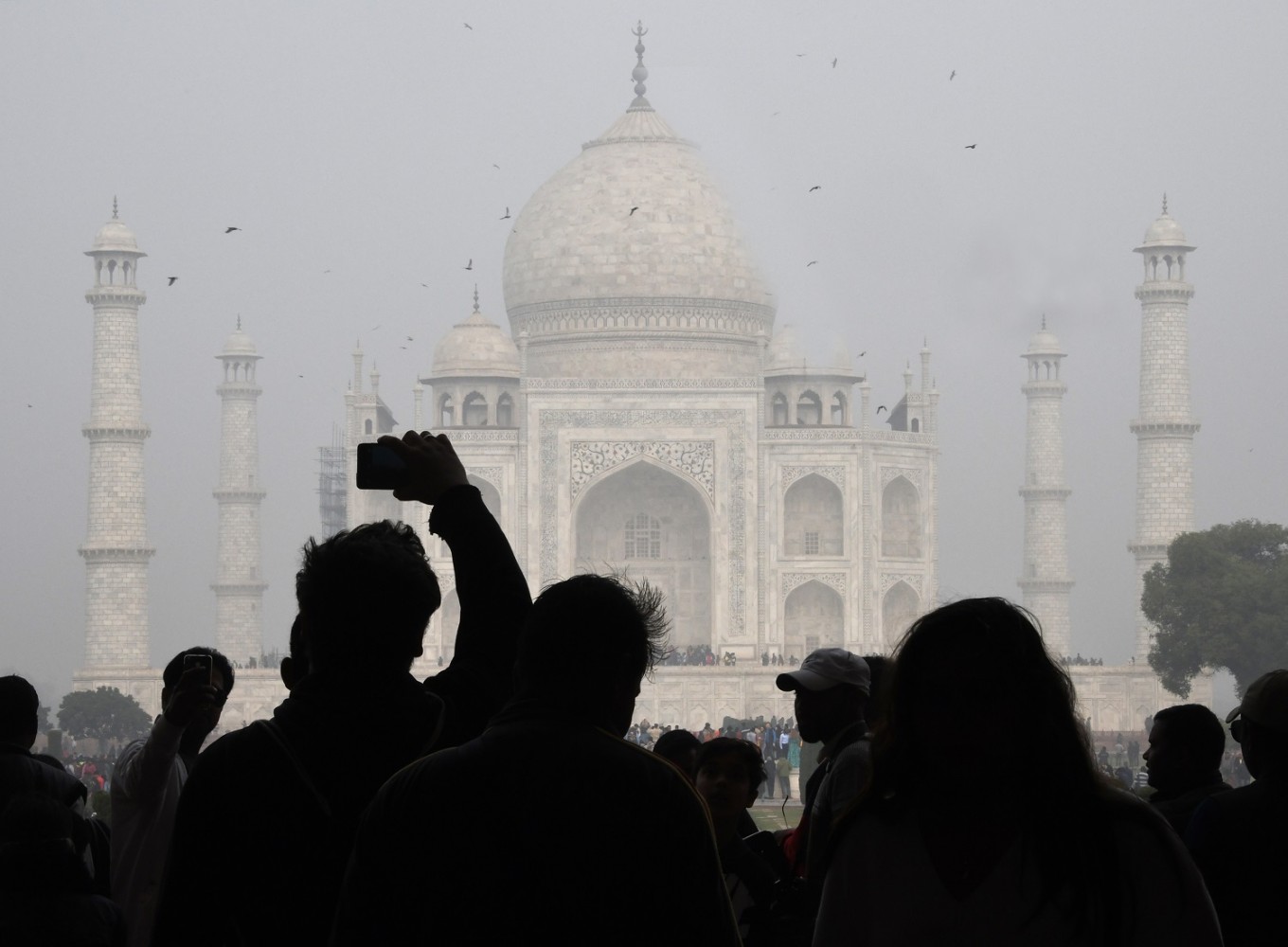Popular Reads
Top Results
Can't find what you're looking for?
View all search resultsPopular Reads
Top Results
Can't find what you're looking for?
View all search resultsIndia limits visitors to save Taj Mahal
Change text size
Gift Premium Articles
to Anyone
 Visitors take a photo in front of the Taj Mahal in Agra on January 3, 2018. India is to restrict the number of daily visitors to the Taj Mahal in an effort to preserve the iconic 17th-century monument to love, its biggest tourist draw. Millions of mostly Indian tourists visit the Taj Mahal every year and their numbers are increasing steadily as domestic travel becomes more accessible. (AFP/Dominique Faget)
Visitors take a photo in front of the Taj Mahal in Agra on January 3, 2018. India is to restrict the number of daily visitors to the Taj Mahal in an effort to preserve the iconic 17th-century monument to love, its biggest tourist draw. Millions of mostly Indian tourists visit the Taj Mahal every year and their numbers are increasing steadily as domestic travel becomes more accessible. (AFP/Dominique Faget)
I
ndia is to restrict the number of daily visitors to the Taj Mahal in an attempt to preserve the iconic 17th-century monument to love, its biggest tourist attraction.
Millions of mostly Indian tourists visit the Taj Mahal every year and their numbers are increasing steadily as domestic travel becomes easier.
Experts say the vast crowds increase wear and tear on the white marble tomb, which already must undergo regular cleaning to stop it turning yellow from polluted air, and could put pressure on its foundations.
In future only 40,000 local tourists will be allowed to enter the historic complex per day, authorities said Wednesday.
"We have to ensure the safety of the monument and visitors as well. Crowd management was emerging as a big challenge for us," an official with the Archeological Survey of India -- which controls the monument -- told AFP on condition of anonymity.
The restrictions will not apply to foreigners, who pay 1,000 rupees ($16) to enter.
Indian visitors normally pay just 40 rupees, but will be able to buy the more expensive ticket if they want to get around the limit.
The Taj Mahal was built by Mughal emperor Shah Jahan as a tomb for his beloved wife Mumtaz Mahal, who died giving birth in 1631.
Anyone wanting to see the main crypt, which houses the couple's spectacular marble graves inlaid with semi-precious stones, will also have to pay for the pricier ticket.
The graves also date back to the 17th century but do not actually contain the bodies of the royal couple, who are buried under a separate lower chamber.
Read also: Insect poop threatens to damage marble at India's Taj Mahal
Chaotic
Visitors to the UNESCO World Heritage site already have to contend with lengthy queues and heavy security.
The plan to restrict visitors comes after five people were injured in a crush on the last day of the year, which often attracts large crowds.
"It's a welcome move because the last time we came here it was very chaotic," Seema Sarkar, a tourist from the eastern Indian state of West Bengal, told AFP.
Local tourist police inspector R.B. Pandey said it was a much needed step.
"It's priceless heritage and if we don't cap the tourist numbers it will be lost for future generations," he said.
"You just cannot control such huge crowds."
Daily visitors to the Taj Mahal average 10,000-15,000 but can be much higher at weekends, going up to around 70,000.
Nearly 6.5 million visited the monument in 2016, according to government figures.
The Taj Mahal has attracted world leaders and royalty, including former US President Bill Clinton.
Diana, the late British princess, was famously photographed alone on a marble seat there in 1992.
But the mausoleum faces an array of threats, including the yellowing effects of smog.
In 2016, green stains on its rear wall were blamed on excrement from insects.
Authorities have in the past covered the iconic monument's facade with "mud packs" made of fuller's earth, which draws out the impurities, to restore its whiteness.






